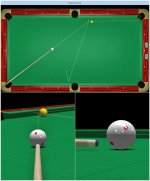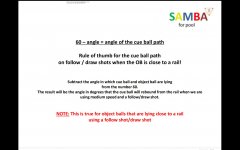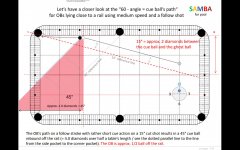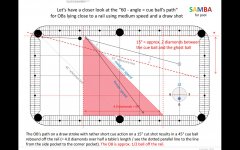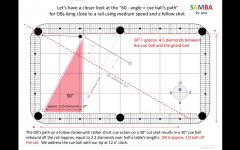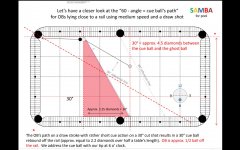I had this layout yesterday on my home table when I was breaking some racks of 9-Ball. Using about a tip of left english seemed the only shot to go from the 1B to the 2B, per the dotted lines. I wanted the CB to come back past the side pocket for the shot on the 2B. Anyway, I overcut the 1B which, I assume, was because of the English and the fact that it caused the 1B to be overcut.
So, I practiced this shot quite a bit and never got the hang of it. Did I play this shot wrong? And if it is indeed an English type shot, anybody got any tips?
Oh, and just so there's no misunderstanding, the first shot is where the measles CB is and the white CB is where I wanted to go.
r/DCP
https://pad-v1.chalkysticks.com/05529.png
So, I practiced this shot quite a bit and never got the hang of it. Did I play this shot wrong? And if it is indeed an English type shot, anybody got any tips?
Oh, and just so there's no misunderstanding, the first shot is where the measles CB is and the white CB is where I wanted to go.
r/DCP
https://pad-v1.chalkysticks.com/05529.png
Last edited:
